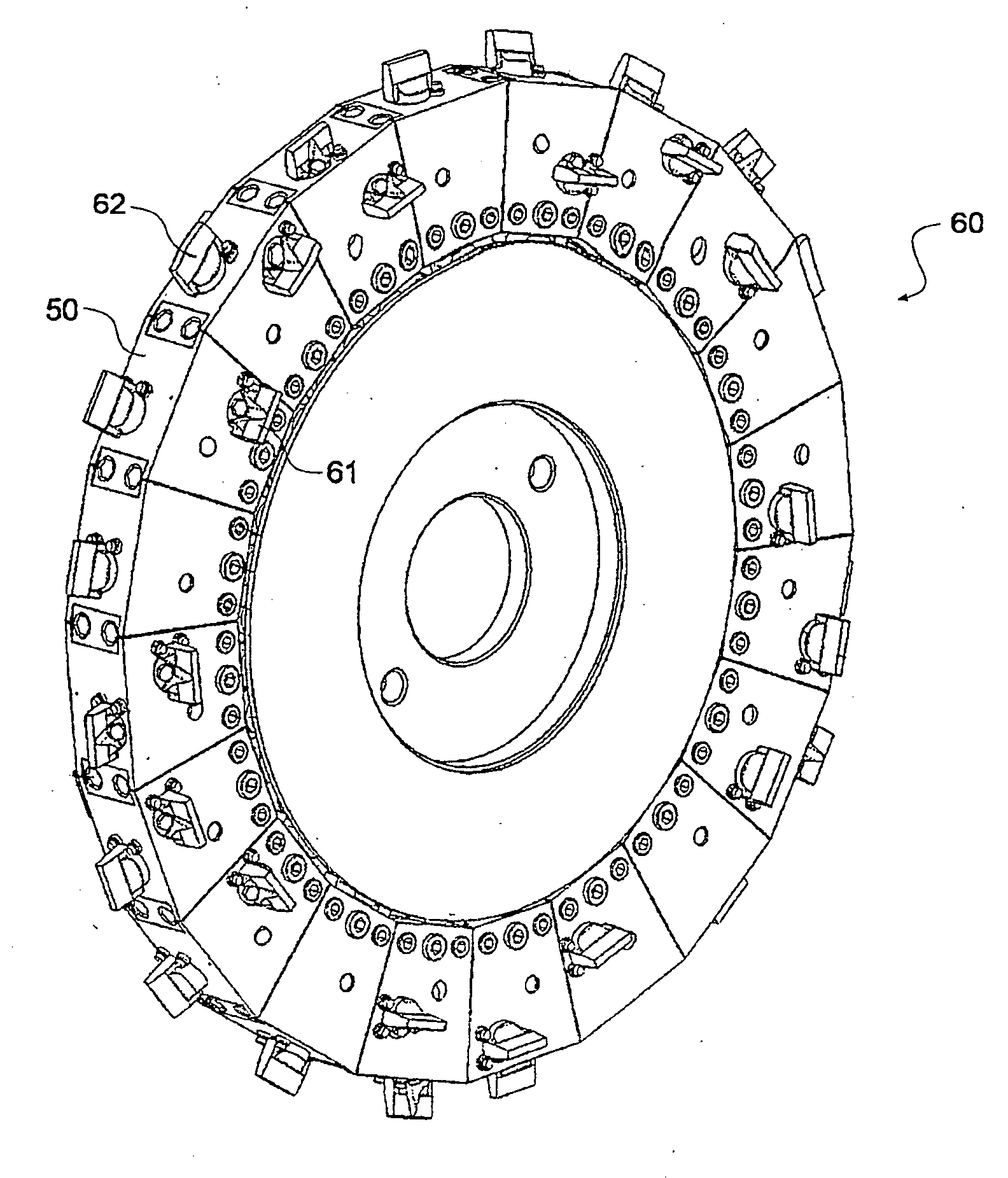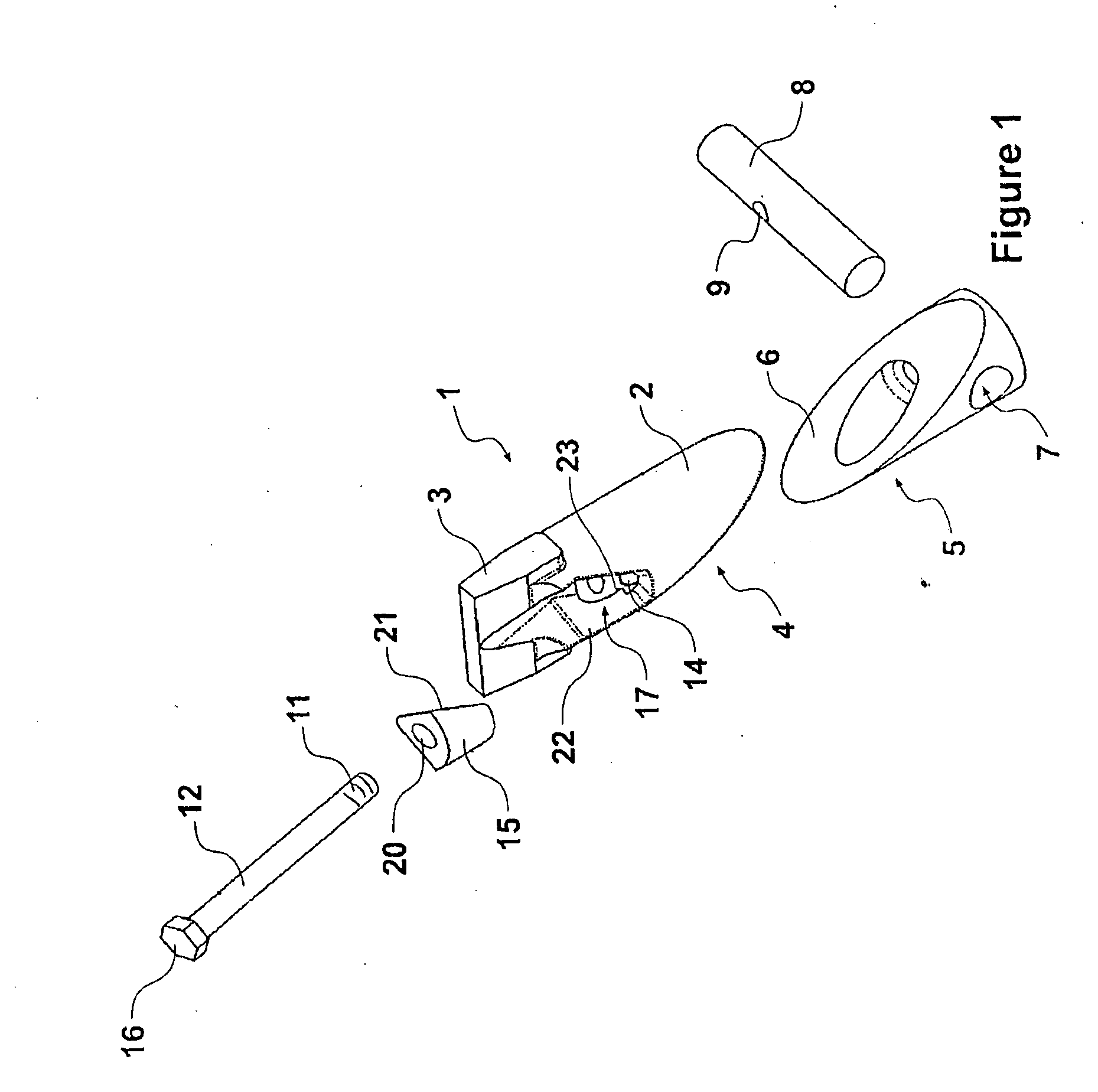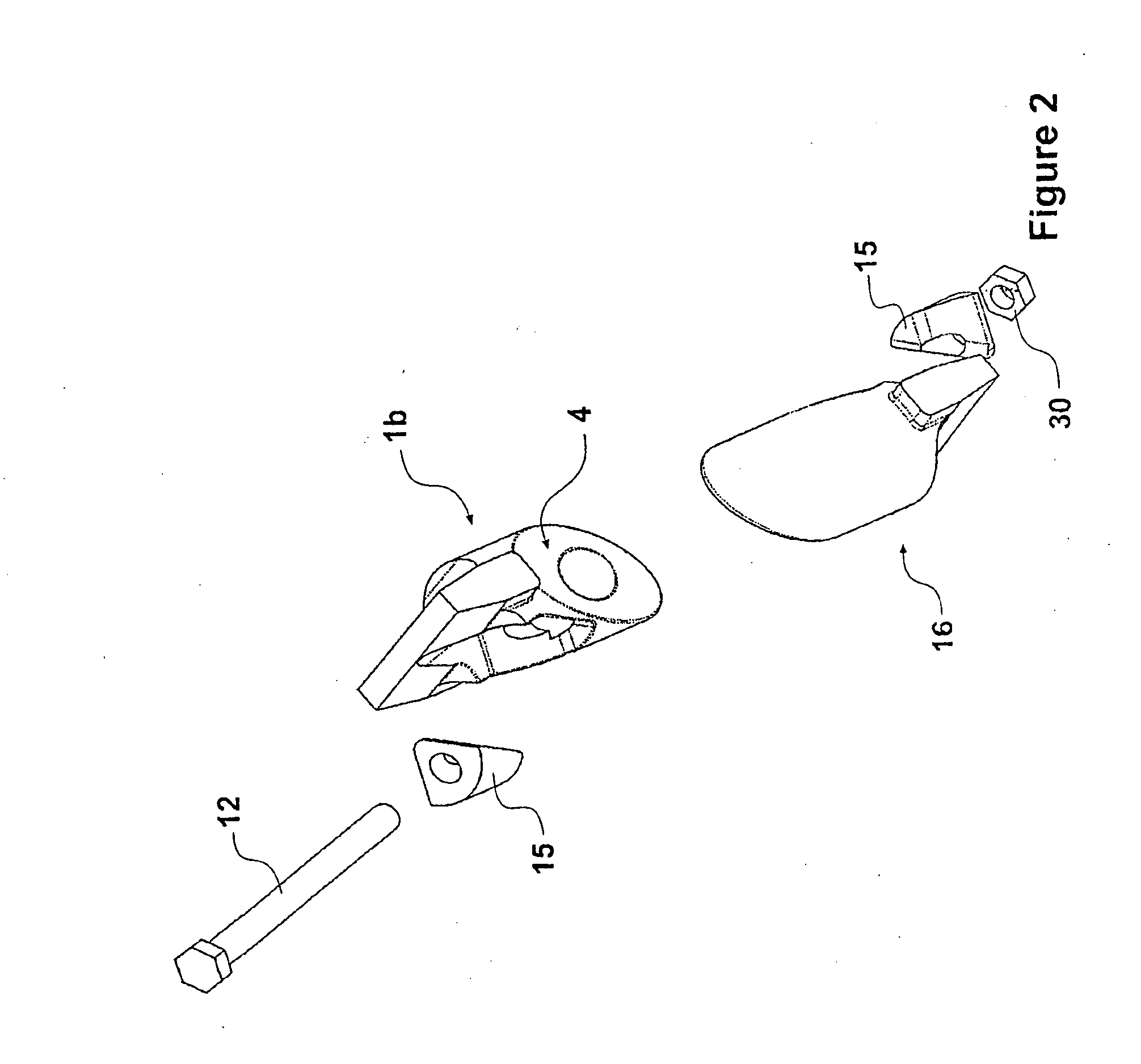[0056]While in its simplest form the provision for a connecting bolt may simply comprise an aperture through the tip body portion, and a suitable face for seating the bolt, preferred embodiments have a tapered wedge keeper to further improve the performance of the present invention. This keeper is typically a wedge or tapered element which, if moved downwardly with respect to the tip body portion, will also be moved slightly outwardly—i.e. perpendicularly to the longitudinal axis of the tip body portion. This may be achieved by providing suitably inclined faces on both the keeper and on the walls of recessed portions of the tip body portion for accommodating the keeper. In practice this keeper will be intermediate the head of a connection element comprising a bolt (or a nut) and the tip body portion. In practice also, the tip body portion, and keeper, will be inserted into a suitable locating aperture in a grinding disc, drum, or part thereof. Once inserted, outward movement of the keeper would not be permitted. Hence attempted downward movement of the keeper, by the retaining bolts, will in fact cause the keeper to wedge more tightly within the recess defined by the inclined recess walls of the tip body portion, and against the wall of the aperture into which the tip portion with keeper has been inserted. This very effectively tightens the whole arrangement within the provided locating aperture to ensure that there is no slack, or loose movement.
[0057]In preferred embodiments of the present invention the bottommost face of the tip portion is tapered, though the invention in its broadest form includes a bottom face substantially perpendicular to the longitudinal axis. Tapering can provide for a number of other potentially realisable advantages or features. The preferred degree of tapering is 15°-75° inclusive of the longitudinal axis, and more preferably 30°-60° inclusive. This taper also allows for energy transmission and some absorption, due to relative movement, should a tooth or tip portion be subjected to a high
impact. This can preserve the life of a tip portion under normal or
adverse conditions.
[0059]As another variation the complementary base portion may comprise merely a base body portion able to be connected to a grinding disc, drum, or part thereof. In the preferred embodiment this base portion merely comprises a blind wedge whose top face is contoured to match the bottom face of the other tip portion. Suitable means for connection of this base portion to the grinding disc, etc, should be provided. This may merely comprise a threaded aperture into which a bolt may be tightened from outside. However, in a preferred embodiment there is a provided an aperture in the body of the base portion through which a pin may be passed. This pin may have a threaded aperture within it so that once having passed through the grinding disc (or part thereof etc) and through the body of the base portion itself, the retaining bolt for the tip portion can be inserted into the threaded aperture and tightened. As a result the
assembly, and tip portion, is tightly secured against removal from the locating aperture for the
assembly, as well as being prevented from rotation within the locating aperture provided for the assembly.
[0060]Construction of the various components may vary. For ease of construction, and economy, it is considered that the majority of components may be cast, and preferably of a suitably hard material. The tip portion generally has the highest requirement, and particularly the tooth portion thereof. Consequently the tooth portion may be manufactured separately and subsequently fastened to the tip portion, or alternatively the entire tip portion may be cast as one. The actual tooth portion may then be machined, according to user preference, to achieve the appropriate contours and sharpness of edges which may be desirable for a tooth. In preferred embodiments high strength and high
hardness steels are used for the tooth portion, with the entire tip portion with tooth portion then cast as one unit. Other components, which may be subjected to less wear, may be formed of other types of steel or materials.
[0062]In preferred embodiments of the present invention the main body of the tip portion, and also the main body formed by the union of the tip portion with base portion, is preferably circular in cross section. By utilising a circular cross section, the accommodating aperture within the grinding disc (or drum etc) may be easily formed by drilling a suitably sized aperture. While other shapes may be provided for in various other embodiments and need not be of constant cross-section (e.g. conical or part conical sections), this increases the difficulty of forming the appropriately shaped aperture within the grinding disc etc. However, this does not preclude their use—non circular (cross-section) embodiments would be less likely to rotate within the aperture.
[0064]Various modifications may be made to different embodiments of the invention. For instance, the locating aperture for a tooth assembly need not be at 90° to the surface from which it protrudes. It may be angled, preferably so That the tooth end faces into the direction of travel. This can further improve resistance to impacts.
 Login to View More
Login to View More 









